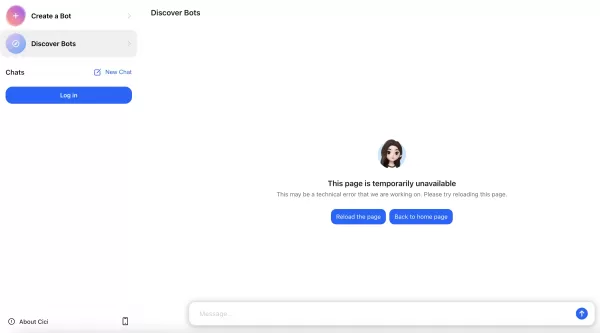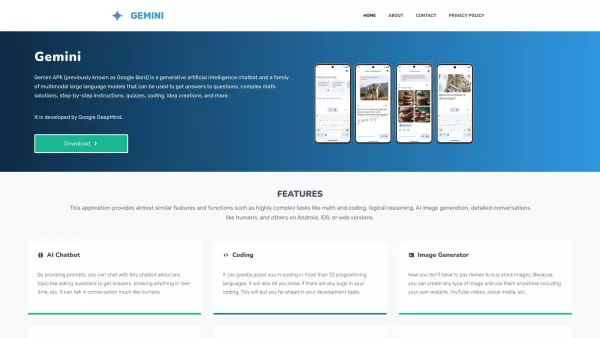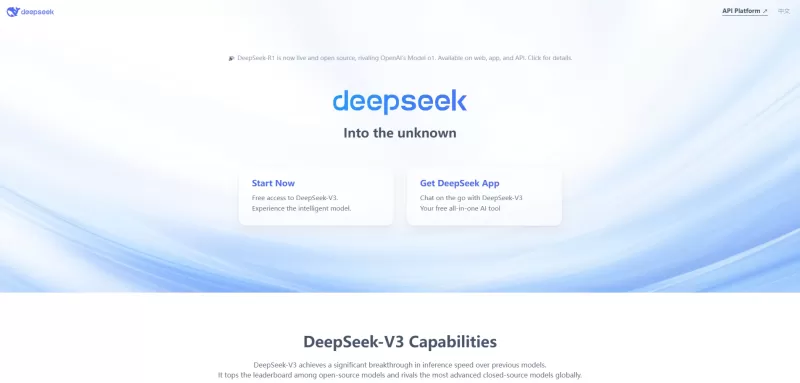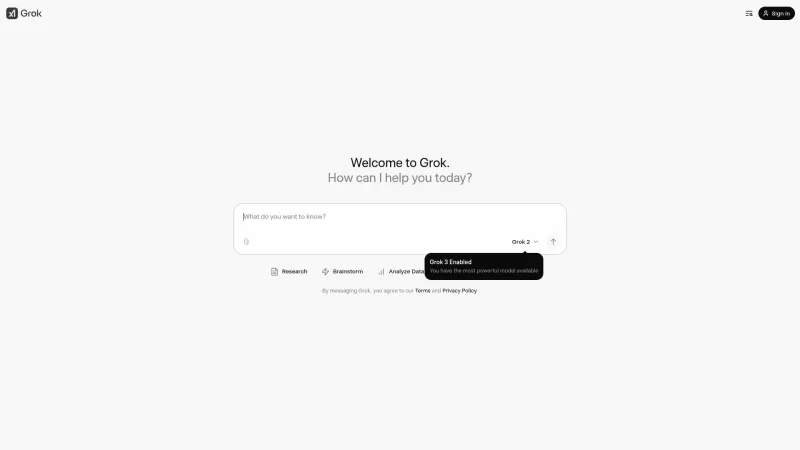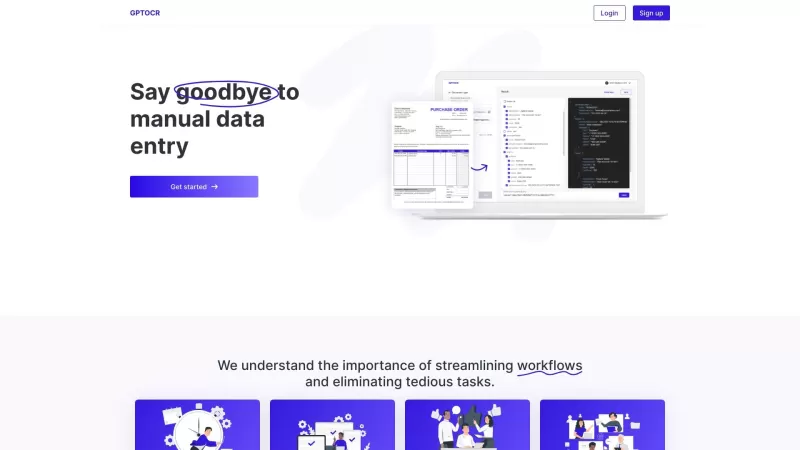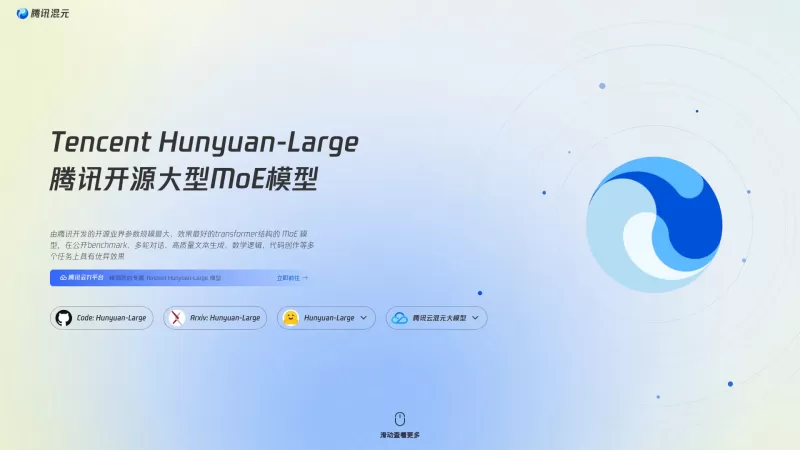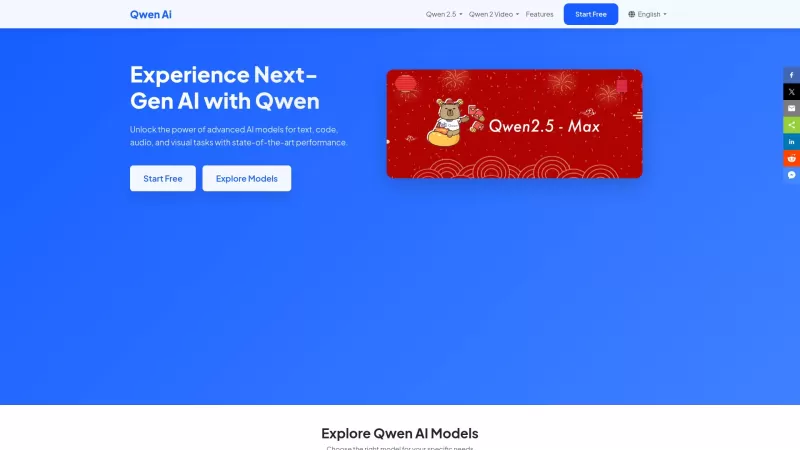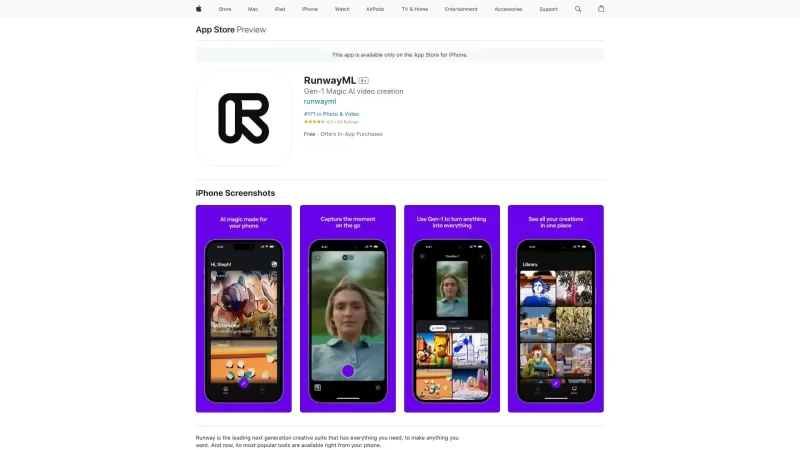Vibe coding at enterprise scale: AI tools now tackle the full development lifecycle

The phenomenon of vibe coding, where developers increasingly lean on AI for code generation and assistance, has transitioned from a fringe idea to a mainstream development practice. Tools like GitHub Copilot have paved the way for AI-assisted coding, shifting the focus from mere code generation to comprehensive development workflows. In this competitive arena, companies such as Cursor, Lovable, Bolt, and Windsurf (formerly known as Codeium) are carving out their niches with unique approaches to AI-assisted development.
Vibe coding signifies a cultural shift, emphasizing intent and outcomes over the nitty-gritty of manual coding. It's a concept that sparks both excitement and skepticism among developers. Vibe coding isn't just about filling in code snippets; it's about generating entire applications with minimal prompts, distinguishing itself from the more constrained low-code/no-code platforms.
Some proponents of vibe coding even suggest it could augment or potentially replace traditional software developers. Amid this competitive landscape, Windsurf's recent Wave 6 release, which launched on April 2, tackles a frequently overlooked challenge: deployment. While many platforms excel at generating code, the transition from local development to production deployment remains a manual hassle.
Anshul Ramachandran, head of product and strategy at Windsurf, shared with VentureBeat, "We've really streamlined the process of iterating and deploying applications. The promise of AI and these agentic systems is to significantly lower the barriers to building."
Windsurf Wave 6 Feature Breakdown: What Enterprises Need to Know
Windsurf Wave 6 introduces several features designed to tackle workflow bottlenecks for enterprises:
- Deploys: A seamless, one-click option to package and share apps built with Windsurf on the public internet, currently integrated with Netlify for deploying websites or JavaScript web apps.
- Improved Performance for Long Conversations: Enhanced quality in extended AI interactions through checkpointing and summarization techniques.
- Tab Improvements: Better context awareness, including integration with user search history and support for Jupyter Notebooks in the Windsurf Editor.
- Conversation Table of Contents: A user-friendly feature that simplifies access to past messages and allows conversation reversion.
Conversation Management: Technical Innovation That Matters
The Conversation Table of Contents in Wave 6 addresses a critical issue: managing extended interactions with AI assistants. Ramachandran admits, "AI isn't perfect. It can make mistakes. Often, users find themselves stuck in a loop, trying to prompt the AI to correct its errors. Instead, it's more efficient to revert to a previous state where things were on track and try a different approach."
This feature introduces a structured navigation system that revolutionizes how developers interact with AI assistants:
- Significant interactions are automatically indexed.
- A sidebar allows quick access to previous states.
- One-click reversion restores earlier conversation states.
- The system maintains context while avoiding the inefficiency of repeatedly prompting the AI to self-correct.
Getting the 'Vibe' of the Vibe Coding Landscape
Since its release, Windsurf Wave 6 has garnered positive feedback.
Builders: you still using Cursor or have you switched to Windsurf? I'm hearing more and more developers are switching. https://t.co/euQCNU3OWu
— Robert Scoble (@Scobleizer) April 2, 2025
The vibe coding space is bustling with activity and fierce competition. Just last week, Replit Agent v2 became generally available, leveraging Anthropic's Claude 3.7 Sonnet, considered one of the most powerful LLMs for coding tasks. Replit Agent v2 introduces:
- Enhanced Autonomy: It forms hypotheses, searches for relevant files, and makes changes only when well-informed.
- Better Problem-Solving: It's less prone to getting stuck and can reassess its approach.
- Realtime App Design Preview: An industry-first feature that shows live interfaces as the Agent builds.
- Improved UI Creation: It excels at creating high-quality interfaces with earlier design previews.
- Guided Ideation: It suggests potential next steps throughout development.
Cursor remains active, regularly updating with features like chat tabs for simultaneous AI conversations. On March 28, Cursor added support for Google's Gemini 2.5 Pro model.
Bolt also released an update on March 28, along with a new mobile beta. At the end of February, Bolt AI v1.33 added full support for Claude 3.7 and prompt caching.
Though not typically categorized under vibe coding, Cognition Labs released Devin 2.0 this week. Similar to Windsurf's tabbed feature, Devin can now run multiple AI agents simultaneously on different tasks. It also includes interactive planning to scope and plan tasks from broad ideas and a novel search tool for better code navigation and understanding.
The Evolution of Developer Roles, Not Their Replacement
The vibe coding movement has ignited discussions about the relevance of traditional programming skills. Windsurf adopts a pragmatic stance, reassuring enterprise leaders about the future of their development teams.
Ramachandran explains, "Vibe coding refers to a new class of developers. It's about separating 'vibe coders' from 'non-vibe coders'—a new group of people who can now write code, who might not have been able to before. This is how software development has evolved; we make it easier to write software so more people can do it."
What Vibe Coding Tools Mean for Enterprises
Just as low-code and no-code tools didn't fully replace enterprise developers in the pre-AI era, vibe coding is unlikely to replace all developers. Vibe coding is more versatile, allowing users to build a wide range of applications with fewer restrictions. Many modern vibe coding tools also integrate with existing processes and codebases.
It's challenging to predict which tool will dominate, given the rapid pace of development. Enterprises should experiment with different tools to find what best suits their workflow and style. For technical leaders planning their AI-assisted development strategy, consider these points:
- Evaluate End-to-End Workflows: Look beyond code generation to assess how tools handle the entire development lifecycle from concept to deployment.
- Consider Enterprise-Specific Requirements: Tools designed for individual developers may struggle to meet enterprise needs for compliance, security, and team collaboration.
- Balance Democratization with Governance: While expanding developer access is beneficial, ensure mechanisms are in place to maintain code quality, security, and maintainability.
- Plan for Skill Evolution, Not Replacement: Focus on enhancing existing developer skills with AI capabilities rather than replacing them entirely.
- Prioritize Context Management Capabilities: As deployments grow, efficient management of complex codebases and recovery from AI errors become crucial.
The vibe coding movement offers real opportunities to speed up development and broaden participation, but enterprises must choose tools that align with their specific needs and realities.
Related article
 Replit Secures $250M Funding at $3B Valuation, Strengthening Its Domination in Vibe Coding
Replit, the innovative platform that democratized coding by bringing development directly into web browsers, has secured $250 million in fresh funding, catapulting its valuation to $3 billion. The investment round was spearheaded by Prysm Capital, wi
Replit Secures $250M Funding at $3B Valuation, Strengthening Its Domination in Vibe Coding
Replit, the innovative platform that democratized coding by bringing development directly into web browsers, has secured $250 million in fresh funding, catapulting its valuation to $3 billion. The investment round was spearheaded by Prysm Capital, wi
 Alibaba's 'ZeroSearch' AI Slashes Training Costs by 88% Through Autonomous Learning
Alibaba's ZeroSearch: A Game-Changer for AI Training EfficiencyAlibaba Group researchers have pioneered a breakthrough method that potentially revolutionizes how AI systems learn information retrieval, bypassing costly commercial search engine APIs e
Alibaba's 'ZeroSearch' AI Slashes Training Costs by 88% Through Autonomous Learning
Alibaba's ZeroSearch: A Game-Changer for AI Training EfficiencyAlibaba Group researchers have pioneered a breakthrough method that potentially revolutionizes how AI systems learn information retrieval, bypassing costly commercial search engine APIs e
 Cursor Acquires Koala in Bid to Compete With GitHub Copilot
The startup behind viral AI coding platform Cursor is aggressively recruiting top engineering talent from rival AI firms as it escalates competition with Microsoft's GitHub Copilot. Recent moves include acquiring talent from AI-powered CRM startup Ko
Comments (23)
0/200
Cursor Acquires Koala in Bid to Compete With GitHub Copilot
The startup behind viral AI coding platform Cursor is aggressively recruiting top engineering talent from rival AI firms as it escalates competition with Microsoft's GitHub Copilot. Recent moves include acquiring talent from AI-powered CRM startup Ko
Comments (23)
0/200
![RogerKing]() RogerKing
RogerKing
 August 15, 2025 at 1:00:59 PM EDT
August 15, 2025 at 1:00:59 PM EDT
AI coding tools are wild! From just spitting out code snippets to handling the whole dev lifecycle? That's next-level. I wonder how much this'll change the game for solo devs vs big teams. 🤔


 0
0
![ChristopherThomas]() ChristopherThomas
ChristopherThomas
 August 13, 2025 at 7:00:59 PM EDT
August 13, 2025 at 7:00:59 PM EDT
AI taking over the full dev lifecycle is wild! I tried Copilot for a project, and it’s like having a super-smart pair programmer. But, gotta wonder, are we still coding or just vibing with algorithms now? 🤔


 0
0
![JuanWhite]() JuanWhite
JuanWhite
 August 11, 2025 at 7:00:59 PM EDT
August 11, 2025 at 7:00:59 PM EDT
It's wild how AI's now running the whole dev show! Vibe coding sounds like a coder’s dream—GitHub Copilot’s basically my new pair-programming buddy. But, is it too good? I’m low-key worried we’re all just gonna become AI’s code babysitters 😅.


 0
0
![RalphGarcia]() RalphGarcia
RalphGarcia
 April 19, 2025 at 1:09:58 AM EDT
April 19, 2025 at 1:09:58 AM EDT
バイブコーディングのおかげで、仕事のやり方が完全に変わりました!このツールを使えば、細かい部分はAIに任せて、大きな視点に集中できます。まるで眠らないコーディングの相棒がいるみたい!ただ、コーヒーブレイクの理解がもう少し欲しいですね😂


 0
0
![WillieJones]() WillieJones
WillieJones
 April 16, 2025 at 6:45:39 PM EDT
April 16, 2025 at 6:45:39 PM EDT
¡El vibe coding ha cambiado totalmente mi forma de trabajar! Con herramientas como esta, puedo enfocarme en lo más importante mientras el AI se encarga de los detalles. ¡Es como tener un compañero de codificación que nunca duerme! Solo desearía que entendiera mejor mis descansos para café 😂


 0
0
![BenLewis]() BenLewis
BenLewis
 April 16, 2025 at 5:43:25 PM EDT
April 16, 2025 at 5:43:25 PM EDT
Vibe coding has totally changed how I work! With tools like this, I can focus on the bigger picture while the AI handles the nitty-gritty. It's like having a coding buddy that never sleeps! Only wish it could understand my coffee breaks better 😂


 0
0

The phenomenon of vibe coding, where developers increasingly lean on AI for code generation and assistance, has transitioned from a fringe idea to a mainstream development practice. Tools like GitHub Copilot have paved the way for AI-assisted coding, shifting the focus from mere code generation to comprehensive development workflows. In this competitive arena, companies such as Cursor, Lovable, Bolt, and Windsurf (formerly known as Codeium) are carving out their niches with unique approaches to AI-assisted development.
Vibe coding signifies a cultural shift, emphasizing intent and outcomes over the nitty-gritty of manual coding. It's a concept that sparks both excitement and skepticism among developers. Vibe coding isn't just about filling in code snippets; it's about generating entire applications with minimal prompts, distinguishing itself from the more constrained low-code/no-code platforms.
Some proponents of vibe coding even suggest it could augment or potentially replace traditional software developers. Amid this competitive landscape, Windsurf's recent Wave 6 release, which launched on April 2, tackles a frequently overlooked challenge: deployment. While many platforms excel at generating code, the transition from local development to production deployment remains a manual hassle.
Anshul Ramachandran, head of product and strategy at Windsurf, shared with VentureBeat, "We've really streamlined the process of iterating and deploying applications. The promise of AI and these agentic systems is to significantly lower the barriers to building."
Windsurf Wave 6 Feature Breakdown: What Enterprises Need to Know
Windsurf Wave 6 introduces several features designed to tackle workflow bottlenecks for enterprises:
- Deploys: A seamless, one-click option to package and share apps built with Windsurf on the public internet, currently integrated with Netlify for deploying websites or JavaScript web apps.
- Improved Performance for Long Conversations: Enhanced quality in extended AI interactions through checkpointing and summarization techniques.
- Tab Improvements: Better context awareness, including integration with user search history and support for Jupyter Notebooks in the Windsurf Editor.
- Conversation Table of Contents: A user-friendly feature that simplifies access to past messages and allows conversation reversion.
Conversation Management: Technical Innovation That Matters
The Conversation Table of Contents in Wave 6 addresses a critical issue: managing extended interactions with AI assistants. Ramachandran admits, "AI isn't perfect. It can make mistakes. Often, users find themselves stuck in a loop, trying to prompt the AI to correct its errors. Instead, it's more efficient to revert to a previous state where things were on track and try a different approach."
This feature introduces a structured navigation system that revolutionizes how developers interact with AI assistants:
- Significant interactions are automatically indexed.
- A sidebar allows quick access to previous states.
- One-click reversion restores earlier conversation states.
- The system maintains context while avoiding the inefficiency of repeatedly prompting the AI to self-correct.
Getting the 'Vibe' of the Vibe Coding Landscape
Since its release, Windsurf Wave 6 has garnered positive feedback.
Builders: you still using Cursor or have you switched to Windsurf? I'm hearing more and more developers are switching. https://t.co/euQCNU3OWu
— Robert Scoble (@Scobleizer) April 2, 2025
The vibe coding space is bustling with activity and fierce competition. Just last week, Replit Agent v2 became generally available, leveraging Anthropic's Claude 3.7 Sonnet, considered one of the most powerful LLMs for coding tasks. Replit Agent v2 introduces:
- Enhanced Autonomy: It forms hypotheses, searches for relevant files, and makes changes only when well-informed.
- Better Problem-Solving: It's less prone to getting stuck and can reassess its approach.
- Realtime App Design Preview: An industry-first feature that shows live interfaces as the Agent builds.
- Improved UI Creation: It excels at creating high-quality interfaces with earlier design previews.
- Guided Ideation: It suggests potential next steps throughout development.
Cursor remains active, regularly updating with features like chat tabs for simultaneous AI conversations. On March 28, Cursor added support for Google's Gemini 2.5 Pro model.
Bolt also released an update on March 28, along with a new mobile beta. At the end of February, Bolt AI v1.33 added full support for Claude 3.7 and prompt caching.
Though not typically categorized under vibe coding, Cognition Labs released Devin 2.0 this week. Similar to Windsurf's tabbed feature, Devin can now run multiple AI agents simultaneously on different tasks. It also includes interactive planning to scope and plan tasks from broad ideas and a novel search tool for better code navigation and understanding.
The Evolution of Developer Roles, Not Their Replacement
The vibe coding movement has ignited discussions about the relevance of traditional programming skills. Windsurf adopts a pragmatic stance, reassuring enterprise leaders about the future of their development teams.
Ramachandran explains, "Vibe coding refers to a new class of developers. It's about separating 'vibe coders' from 'non-vibe coders'—a new group of people who can now write code, who might not have been able to before. This is how software development has evolved; we make it easier to write software so more people can do it."
What Vibe Coding Tools Mean for Enterprises
Just as low-code and no-code tools didn't fully replace enterprise developers in the pre-AI era, vibe coding is unlikely to replace all developers. Vibe coding is more versatile, allowing users to build a wide range of applications with fewer restrictions. Many modern vibe coding tools also integrate with existing processes and codebases.
It's challenging to predict which tool will dominate, given the rapid pace of development. Enterprises should experiment with different tools to find what best suits their workflow and style. For technical leaders planning their AI-assisted development strategy, consider these points:
- Evaluate End-to-End Workflows: Look beyond code generation to assess how tools handle the entire development lifecycle from concept to deployment.
- Consider Enterprise-Specific Requirements: Tools designed for individual developers may struggle to meet enterprise needs for compliance, security, and team collaboration.
- Balance Democratization with Governance: While expanding developer access is beneficial, ensure mechanisms are in place to maintain code quality, security, and maintainability.
- Plan for Skill Evolution, Not Replacement: Focus on enhancing existing developer skills with AI capabilities rather than replacing them entirely.
- Prioritize Context Management Capabilities: As deployments grow, efficient management of complex codebases and recovery from AI errors become crucial.
The vibe coding movement offers real opportunities to speed up development and broaden participation, but enterprises must choose tools that align with their specific needs and realities.
 Alibaba's 'ZeroSearch' AI Slashes Training Costs by 88% Through Autonomous Learning
Alibaba's ZeroSearch: A Game-Changer for AI Training EfficiencyAlibaba Group researchers have pioneered a breakthrough method that potentially revolutionizes how AI systems learn information retrieval, bypassing costly commercial search engine APIs e
Alibaba's 'ZeroSearch' AI Slashes Training Costs by 88% Through Autonomous Learning
Alibaba's ZeroSearch: A Game-Changer for AI Training EfficiencyAlibaba Group researchers have pioneered a breakthrough method that potentially revolutionizes how AI systems learn information retrieval, bypassing costly commercial search engine APIs e
 Cursor Acquires Koala in Bid to Compete With GitHub Copilot
The startup behind viral AI coding platform Cursor is aggressively recruiting top engineering talent from rival AI firms as it escalates competition with Microsoft's GitHub Copilot. Recent moves include acquiring talent from AI-powered CRM startup Ko
Cursor Acquires Koala in Bid to Compete With GitHub Copilot
The startup behind viral AI coding platform Cursor is aggressively recruiting top engineering talent from rival AI firms as it escalates competition with Microsoft's GitHub Copilot. Recent moves include acquiring talent from AI-powered CRM startup Ko
 August 15, 2025 at 1:00:59 PM EDT
August 15, 2025 at 1:00:59 PM EDT
AI coding tools are wild! From just spitting out code snippets to handling the whole dev lifecycle? That's next-level. I wonder how much this'll change the game for solo devs vs big teams. 🤔


 0
0
 August 13, 2025 at 7:00:59 PM EDT
August 13, 2025 at 7:00:59 PM EDT
AI taking over the full dev lifecycle is wild! I tried Copilot for a project, and it’s like having a super-smart pair programmer. But, gotta wonder, are we still coding or just vibing with algorithms now? 🤔


 0
0
 August 11, 2025 at 7:00:59 PM EDT
August 11, 2025 at 7:00:59 PM EDT
It's wild how AI's now running the whole dev show! Vibe coding sounds like a coder’s dream—GitHub Copilot’s basically my new pair-programming buddy. But, is it too good? I’m low-key worried we’re all just gonna become AI’s code babysitters 😅.


 0
0
 April 19, 2025 at 1:09:58 AM EDT
April 19, 2025 at 1:09:58 AM EDT
バイブコーディングのおかげで、仕事のやり方が完全に変わりました!このツールを使えば、細かい部分はAIに任せて、大きな視点に集中できます。まるで眠らないコーディングの相棒がいるみたい!ただ、コーヒーブレイクの理解がもう少し欲しいですね😂


 0
0
 April 16, 2025 at 6:45:39 PM EDT
April 16, 2025 at 6:45:39 PM EDT
¡El vibe coding ha cambiado totalmente mi forma de trabajar! Con herramientas como esta, puedo enfocarme en lo más importante mientras el AI se encarga de los detalles. ¡Es como tener un compañero de codificación que nunca duerme! Solo desearía que entendiera mejor mis descansos para café 😂


 0
0
 April 16, 2025 at 5:43:25 PM EDT
April 16, 2025 at 5:43:25 PM EDT
Vibe coding has totally changed how I work! With tools like this, I can focus on the bigger picture while the AI handles the nitty-gritty. It's like having a coding buddy that never sleeps! Only wish it could understand my coffee breaks better 😂


 0
0

